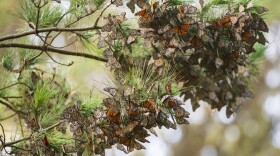-
Caprock Canyon State Park has been officially certified as an international Dark Skies park. The beauty of the park recently inspired a West Texas native to use his new clothing brand to advocate for natural spaces on the South Plains. Our Olivia O’Rand reports on Dying Breed. New research shows that bison, like those living in Caprock Canyon, can help protect prairies from the invasive eastern red cedar.
-
The Rio Grande — the border river shared by the United States and Mexico is experiencing a severe water crisis demanding urgent attention. That's according to a new study that calls for immediate investments in solutions.
-
Toyah residents are once again having to boil their water before drinking it. The small town has endured years of water problems.
-
The ground-dwelling bird's preferred grassland habitat overlaps with agricultural and energy-rich regions, putting the species' future in the hands of private landowners. In the second installment of a two-part series, StateImpact's Chloe Bennett-Steele reports on continued conservation efforts for the species.
-
Virtual fencing uses GPS collars, sounds and electrical cues to move cattle across a landscape. Along with saving ranchers time, researchers say this new technology can help protect, and create, wildlife habitat.
-
Local leaders see data centers, which help power the world’s shift to artificial intelligence, as a way to keep their towns open. Residents worry their way of life — and water — is at stake.
-
Every fall, West Texans look to the skies for one of nature’s most remarkable journeys: the migration of the monarch butterfly. But monarch butterfly populations are declining due to threats like habitat loss, herbicide use and climate change.
-
The bird is likely the result of shifting weather patterns and climate change.
-
Quick-growing blooms of bacteria and algae have long been a hazard in lakes and rivers, because of the toxins they produce. Fueled in part by agricultural runoff, these blooms are also threatening public water systems, making water temporarily unusable, and forcing some cities and towns to take costly preventive measures.
-
Lubbock Lake Landmark is a snapshot of the land before settlement, preserving archeological evidence of early-human life and the natural history of the region’s plants and animals. Through its discoveries, education, and conservation, staff with the Landmark have reintroduced native wildlife driven out of the area, and continue to explore possibilities for the land and for those who love it.

Play Live Radio
Next Up:
0:00
0:00
Available On Air Stations









